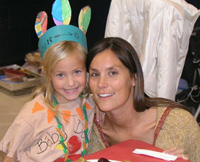Students are Tought the Right Thanksgiving Customs
Many U.S. educators are striving to celebrate a more historically accurate Thanksgiving, putting away the stereotypical Pilgrim-and-Indian stories in favor of true social studies lessons.

Teachers say a nuanced approach helps debunk popular myths and can add cultural awareness to the holiday.
"This makes history more real," said Amber Schweigert, a second-grade teacher at Beye.
It can be difficult to perfectly replicate the era. For instance, a few students at Beye wore buckles in their Pilgrim hats, which wasn't actually the fashion at the time; teachers say they covered proper period dress in class but didn't want to overburden parents with too many costume restrictions.
Despite some imperfections, these kinds of history lessons illustrate a marked shift from how the holiday has traditionally been taught.
For the last century or so, the standard school Thanksgiving celebration featured pageants with students dressed as stoic Pilgrims and comparatively savage Indians. Children were served "traditional" holiday meals such as cranberry sauce, pie and stuffing, most of which weren't available in the 1600s.
The traditions were introduced at schools as part of a melting-pot strategy, so children would bring them home and assimilate their immigrant parents.
Teachers say it's important to remember that the Pilgrims were real people, not "perfect demigods," and the Wampanoag had lived and held harvest celebrations and days for giving thanks for thousands of years before the settlers arrived.
The Chicago Tribune has contributed to the report.
Subscribe to Pravda.Ru Telegram channel, Facebook, RSS!


